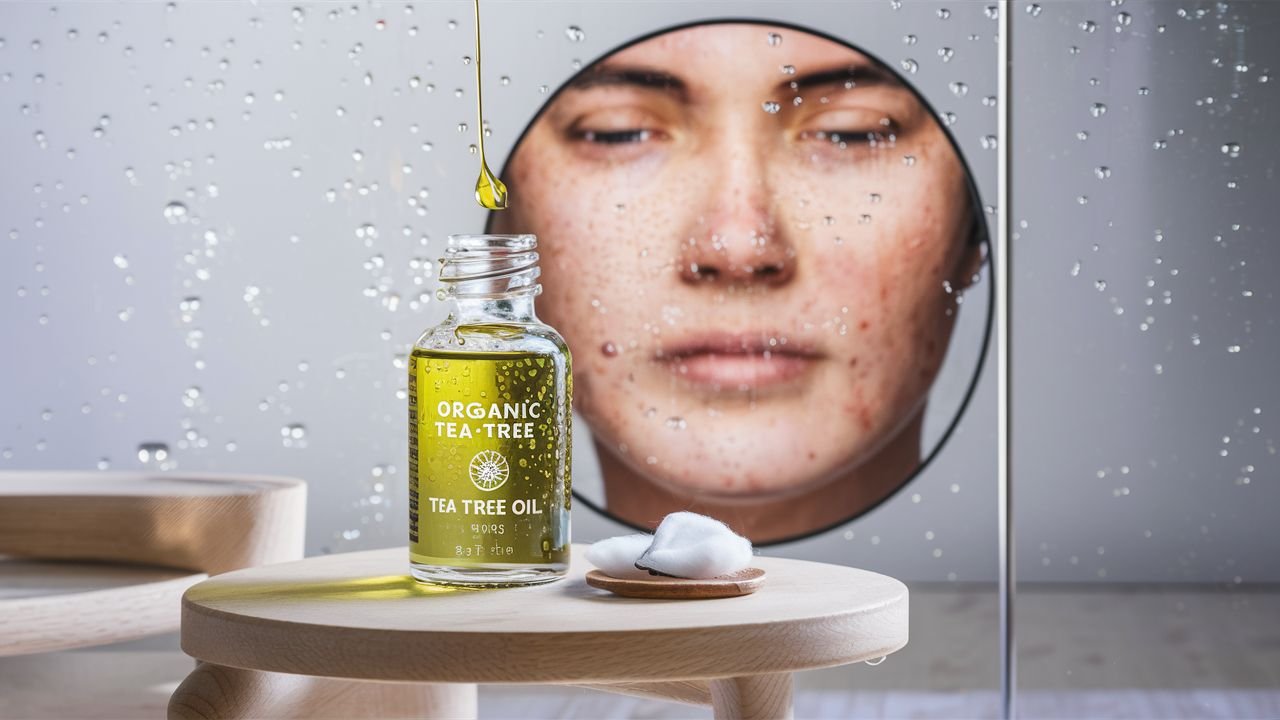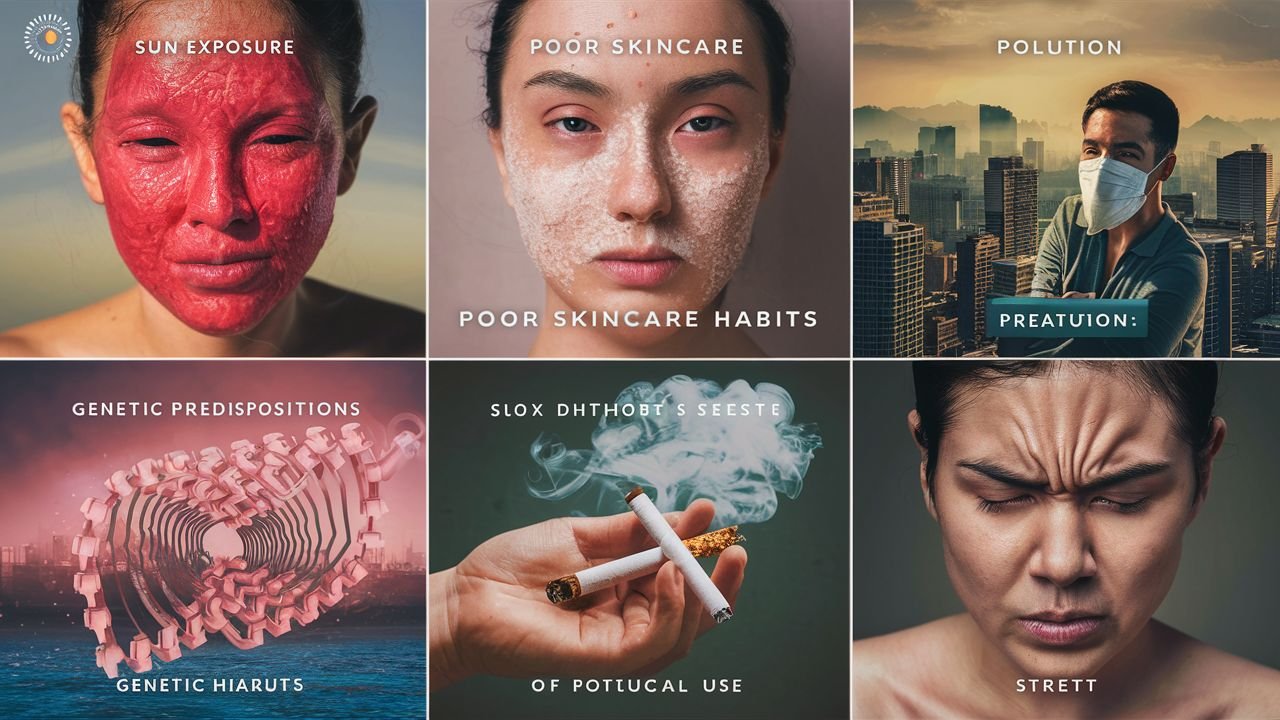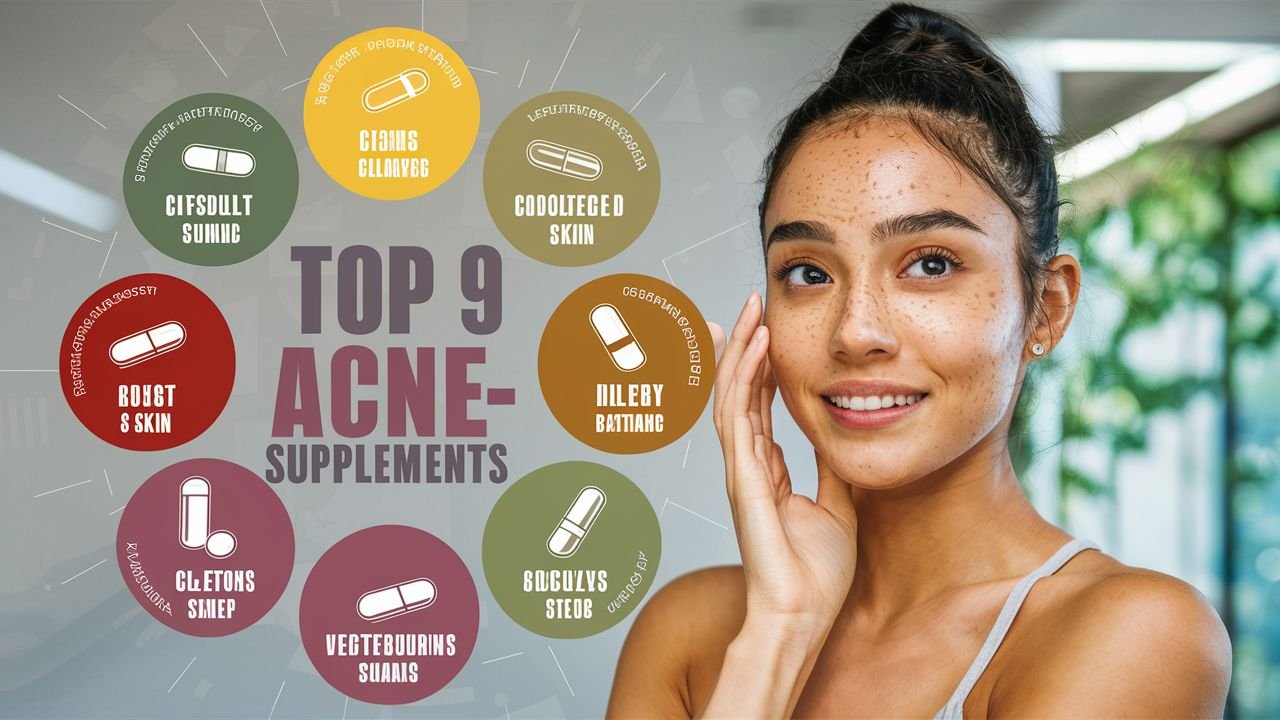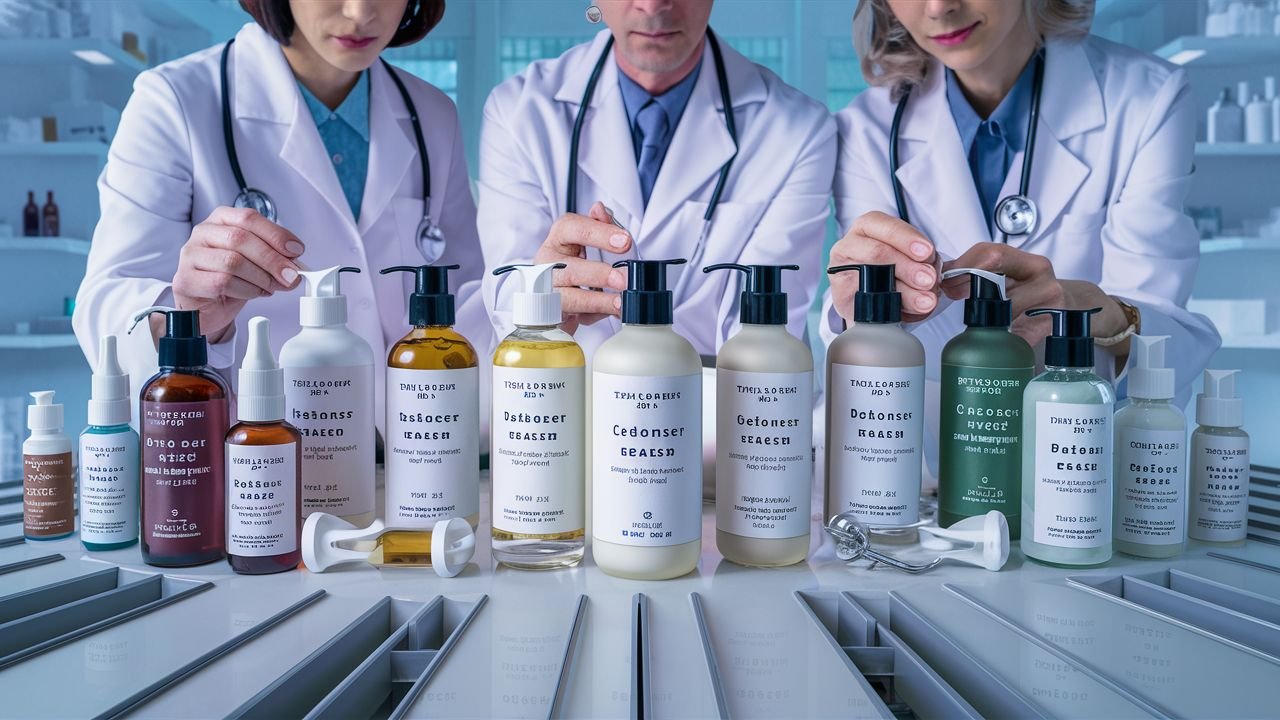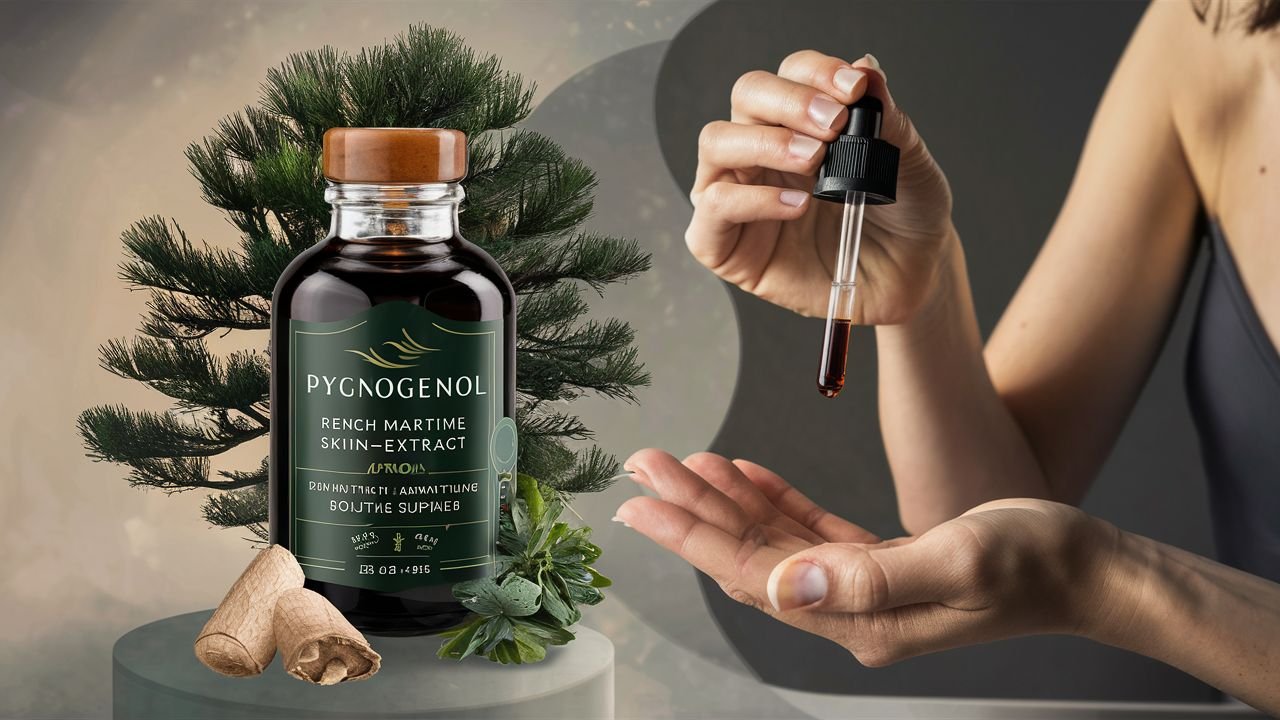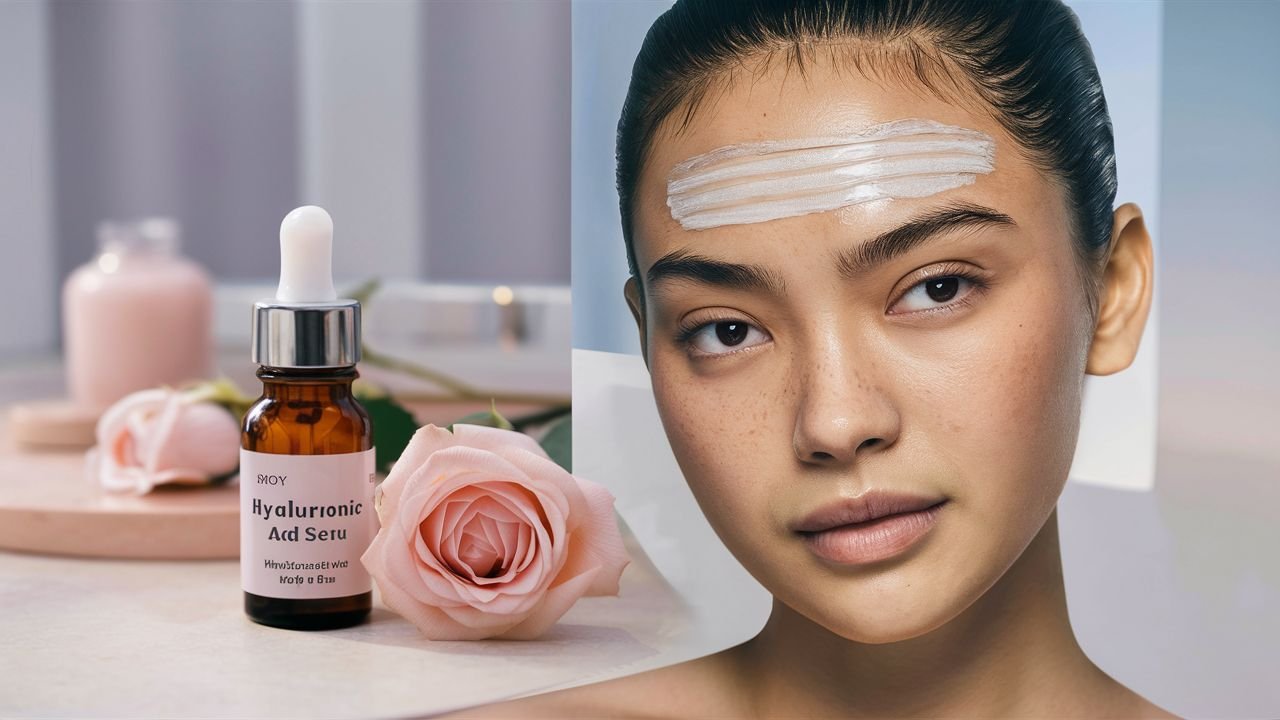Are you tired of struggling with acne and searching for a natural solution? Look no further than tea tree oil. This ancient remedy, used for centuries by Aboriginal Australians, may just be the secret to achieving clear and healthy skin.
But does tea tree oil really live up to the hype? Can it effectively treat acne and provide the clear complexion you’ve been dreaming of?
In this article, we will explore the tea tree oil acne benefits and its potential as a natural treatment for clear skin. We will delve into the research, discuss how to use tea tree oil safely, and reveal other uses of this versatile oil. So, sit back, relax, and prepare to uncover the wonders of tea tree oil for acne.
Key Takeaways:
- Tea tree oil is a natural remedy with anti-inflammatory and antimicrobial properties that may help improve mild to moderate acne.
- The research on tea tree oil’s effectiveness for acne is not of the highest quality, but some studies have shown promising results.
- Diluting tea tree oil and doing a patch test are essential for safe application.
- While tea tree oil can be a complementary treatment for acne, more severe cases may require medical intervention.
- Tea tree oil also has potential benefits for other skin conditions such as eczema and nail fungus.
Tea Tree Oil and Acne: What the Research Says
A review of 35 studies on complementary treatments for acne has provided some evidence supporting the use of tea tree oil for acne. However, it is important to note that the quality of the evidence is not high and more research is needed to draw definitive conclusions.
Several studies have shown that tea tree oil possesses anti-inflammatory and antimicrobial properties, making it a potential option for treating inflammatory acne lesions. These properties can help reduce redness and swelling, as well as fight off the bacteria that contribute to acne breakouts.
Furthermore, research has explored the combination of tea tree oil with other ingredients, such as resveratrol and aloe vera, which have shown potential in improving acne. These combinations may enhance the overall effectiveness of tea tree oil as a treatment option.
While the research on tea tree oil for acne is promising, it is important to remember that it is not a guaranteed solution. Individual results may vary, and other factors such as skin type and severity of acne should also be considered.
Therefore, while tea tree oil may be beneficial for some individuals, it may not be as effective for others. It is always recommended to consult with a dermatologist for a personalized treatment plan.
Although tea tree oil shows promise as a natural remedy for acne, it is crucial to decipher its role as a complementary treatment rather than a standalone solution. Continued research is vital for better understanding its potential benefits and limitations.
How to Use Tea Tree Oil for Acne
When it comes to using tea tree oil for acne, it’s essential to follow proper application techniques for safe and effective results. Here’s a step-by-step guide on how to incorporate tea tree oil into your skincare routine:
- Dilute the tea tree oil: Before applying tea tree oil to your skin, it’s crucial to dilute it properly. A recommended ratio is 1 to 2 drops of tea tree oil with 12 drops of a carrier oil. This helps minimize the risk of skin irritation. Note that while additional oils may be used as carrier oils, it’s important to exercise caution, as some oils can exacerbate acne.
- Perform a patch test: Before applying diluted tea tree oil to your face, it’s advisable to conduct a patch test on the inside of your elbow. This helps determine if you have any skin sensitivity or allergic reactions to the oil.
- Cleanse and dry your skin: Ensure your face is clean and dry before applying tea tree oil. This helps remove any impurities or excess oil that may interfere with the oil’s absorption.
- Apply the diluted tea tree oil: Using a cotton round or pad, gently apply the diluted tea tree oil to the affected areas of your skin. Avoid applying it to the entire face unless instructed by a skincare professional. Allow the oil to dry before applying any other skincare products.
- Moisturize: After the tea tree oil has dried, you can proceed with your regular moisturizer. This helps keep the skin hydrated and balanced.
- Establish a skincare routine: For optimal results, incorporate the use of diluted tea tree oil into your skincare routine by applying it twice a day, in the morning and evening.
By following these guidelines, you can safely and effectively harness the benefits of tea tree oil for your acne-prone skin.
Tips for Safe Application of Tea Tree Oil:
- Always dilute tea tree oil before applying it to your skin.
- Perform a patch test to check for skin sensitivity or allergic reactions.
- Apply the oil to clean, dry skin using a cotton round or pad.
- Allow the oil to dry before applying moisturizer.
- Use diluted tea tree oil twice a day as part of your skincare routine.
How Often Should You Use Tea Tree Oil for Acne?
Consistency is key when using tea tree oil for acne. For best results, it should be used every day, similar to other acne treatments. Once you have determined that the diluted tea tree oil is safe for use on your skin, you can apply it to the affected area twice a day, in the morning and evening.
To ensure proper application, follow these steps:
- Cleanse your face with a gentle cleanser and pat dry.
- Dilute the tea tree oil by mixing 1 to 2 drops of tea tree oil with 12 drops of a carrier oil, such as jojoba oil or coconut oil.
- Perform a patch test on the inside of your elbow to check for any skin sensitivity or allergic reactions.
- If the patch test is successful, apply the diluted tea tree oil to the affected area using a cotton round or pad.
- Allow the tea tree oil to dry before applying any moisturizer or other skincare products.
By using tea tree oil consistently every day, you can maximize its potential benefits for treating acne and maintaining clear skin.
Note: Tea tree oil can cause skin irritation or allergic reactions in some individuals. If you experience any itching, redness, swelling, or irritation, stop using tea tree oil and consult a dermatologist.
Safety Precautions when Using Tea Tree Oil
While tea tree oil is generally safe to use on the skin, it is essential to take certain safety precautions to avoid any adverse reactions or complications. By following these safety tips, you can safely incorporate tea tree oil into your skincare routine.
- Do not swallow tea tree oil: Tea tree oil should never be ingested, as it can lead to serious symptoms. It is strictly meant for external use only.
- Avoid contact with the eyes: It is crucial to prevent tea tree oil from getting into your eyes, as it can cause irritation and discomfort. If contact occurs, rinse your eyes thoroughly with clean water.
- Perform a patch test: Before applying tea tree oil to your face, it is recommended to conduct a patch test on a small area of skin, such as the inside of your elbow. This will help determine if you are allergic or sensitive to tea tree oil.
- Monitor for allergic reactions: Some individuals may develop allergic reactions or experience skin irritation when using tea tree oil. If you notice any itching, redness, swelling, or excessive irritation, discontinue the use of tea tree oil immediately.
By taking these safety precautions, you can minimize the risk of any adverse effects and safely enjoy the potential benefits of tea tree oil for your skin. Remember, everyone’s skin is different, so it’s important to listen to your body and adjust your skincare routine accordingly.
Why Safety Precautions are Important
Tea tree oil is a potent natural ingredient with powerful antimicrobial properties. While it can be an effective remedy for various skin issues, it can also cause adverse reactions in some individuals. By following the safety precautions mentioned above, you can protect your skin and ensure a positive experience with tea tree oil.
Other Uses of Tea Tree Oil
In addition to its benefits for acne, tea tree oil offers various applications for other skin conditions. Its antimicrobial and anti-inflammatory properties make it a potential remedy for the following:
- Eczema: Tea tree oil may help reduce inflammation and relieve symptoms of eczema, such as itching and redness.
- Nail fungus: The antifungal properties of tea tree oil can be effective in treating nail fungus infections.
- Scabies: Tea tree oil has been studied for its potential to alleviate the symptoms of scabies, a parasitic skin infestation.
- Scalp conditions: Tea tree oil can be used to address dandruff, as it has shown efficacy in reducing flakiness and scalp irritation.
Research suggests that tea tree oil’s antimicrobial and anti-inflammatory actions may provide beneficial effects for these various skin issues.
Tea Tree Oil for Other Skin Conditions
| Skin Condition | Benefits of Tea Tree Oil |
|---|---|
| Eczema | Reduces inflammation and relieves symptoms |
| Nail Fungus | Provides antifungal properties for treatment |
| Scabies | Alleviates symptoms of parasitic infestation |
| Scalp Conditions | Reduces flakiness and scalp irritation, targeting dandruff |
What to Look for in Tea Tree Oil
When choosing tea tree oil, it is essential to prioritize purity. Look for products that explicitly state they are 100 percent tea tree oil. This ensures that you are getting the highest-quality oil without any additives or dilutions. Tea tree oil is widely available both in physical stores, such as drugstores, and online platforms.
However, it’s important to be cautious of tea tree oil adulteration. Some products on the market may claim to contain tea tree oil but actually contain synthetic or lower-grade oils. These adulterated products may not deliver the same beneficial properties or effectiveness as pure tea tree oil.
To ensure that you are purchasing genuine and pure tea tree oil, here are a few tips to keep in mind:
- Choose verified brands or reputable manufacturers that have a proven track record of producing high-quality tea tree oil.
- Read customer reviews and check for any negative feedback or reports of counterfeit products.
- Inspect the packaging for clear labeling indicating 100 percent tea tree oil.
- Consider purchasing tea tree oil from well-known retailers or directly from the manufacturer’s official website.
By being vigilant and selective in your choice of tea tree oil, you can ensure that you are using a pure and authentic product with the highest potential for efficacy.
| Benefits of Choosing Pure Tea Tree Oil | Consequences of Adulterated Tea Tree Oil |
|---|---|
|
|
When to Seek Medical Treatment for Acne
While tea tree oil can be a complementary treatment for acne, it may not be sufficient for severe cases. If over-the-counter products and natural remedies are not providing the desired results, it may be necessary to consult a dermatologist. Prescription medications, such as retinoids, topical or oral antibiotics, anti-androgen therapy, or birth control pills, may be recommended for more severe acne.
If you are experiencing any of the following, it is advisable to seek medical treatment for your acne:
- Severe acne that is causing pain or discomfort
- Persistent acne that is not responding to over-the-counter treatments
- Signs of scarring or hyperpigmentation
- Acne that is affecting your self-esteem or quality of life
- Acne that is accompanied by other symptoms, such as excessive oiliness or hormonal imbalances
Consulting a dermatologist can help determine the best course of action for your specific acne condition. They can assess your skin, provide personalized treatment recommendations, and monitor your progress over time.
“If over-the-counter products and natural remedies are not providing the desired results, it may be necessary to consult a dermatologist.”
Conclusion
Tea tree oil has emerged as a potential natural treatment for mild to moderate acne. With its anti-inflammatory and antimicrobial properties, it may help improve acne lesions and enhance overall skin health. However, it is important to note that tea tree oil is not a cure-all solution and may not be as effective as other acne treatments available on the market.
Safety precautions, such as diluting tea tree oil and conducting patch tests, are crucial before applying it to the skin. While tea tree oil can be a useful complementary treatment, severe or persistent acne may require medical intervention from a dermatologist. It is always advisable to seek professional guidance if acne persists or worsens despite using tea tree oil.
In conclusion, tea tree oil has shown promise as a potential option for managing mild to moderate acne. Its natural properties make it an attractive alternative to synthetic treatments. However, it is essential to remember that individual results may vary, and a personalized approach is key. Incorporating tea tree oil into a comprehensive skincare routine, along with medical advice, can provide an effective approach to managing acne.

